A visit to the Roman-Germanic Museum
Our beloved city of Colonia is known worldwide. This is of course particularly due to this Gothic cathedral, which many people came to know and appreciate under the name “Cologne Cathedral”. There are stories and legends spanning several centuries about the construction of the cathedral and the origins of our city. Cologne is one of the oldest German cities and can even boast a large number of finds from Roman times. And where? Exactly, here in the Roman-Germanic Museum!
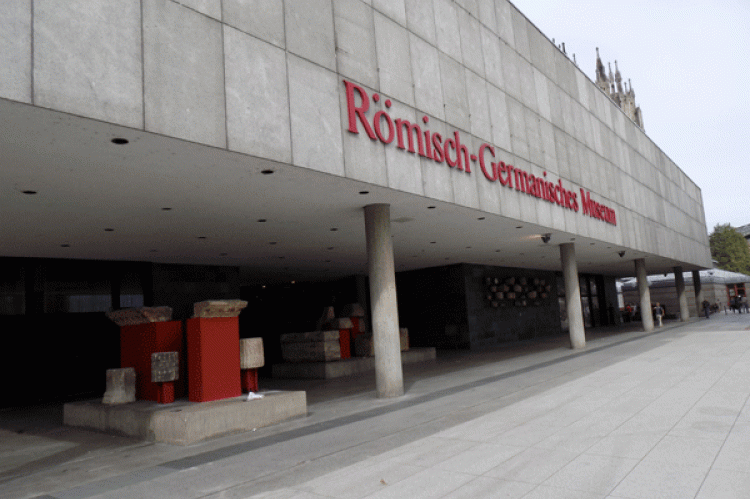
Foundation of the Ubier settlement
We go back a long way, namely around 19 years before Christ, when the settlement "Oppidum Ubiorum" was founded. The general Marcus Vipsanius Agrippa assumed responsibility here and was perhaps precisely why he was later appointed governor. He later renamed the Oppidum Ubiorum, which was founded as the capital. He named it the city name Colonia Claudia Ara Agrippinensium after the name of his granddaughter Agrippina minor!
Colonia Claudia Ara Agrippinensium (CCAA)
The former Ubier settlement developed quickly and magnificently into the capital of the Roman province. The Roman province of Germania inferior became an important location. The Romans had the reins firmly in hand here and were in charge until the Franks ultimately took over Colonia Claudia Ara Agrippinensium. It's amazing that "real" Romans used to walk through the streets and alleys of Cologne and lead their everyday lives here. Today there is very little left of the former city founders and so we are happy about every find from Roman times that reflects a piece of Cologne's history.
Impressions from Roman times in the museum
And if you want to take a look at the impressions from the old Roman times in Cologne, then the Roman-Germanic Museum is the right place for you. This is located next to the Domplatte at Roncalli Platz. So right next to the Cologne Cathedral in the Old Town North. Please check the opening times beforehand as it is not open that long. The museum has a modern cloakroom and a large entrance area. Already outside the museum you will find some exhibits on the walls of the museum and on the floor in front of the outer walls.
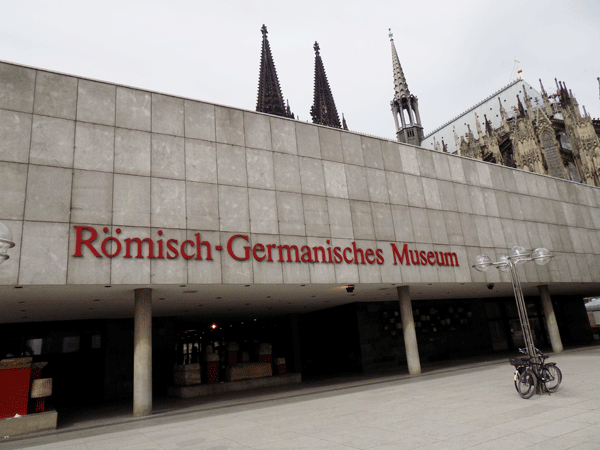

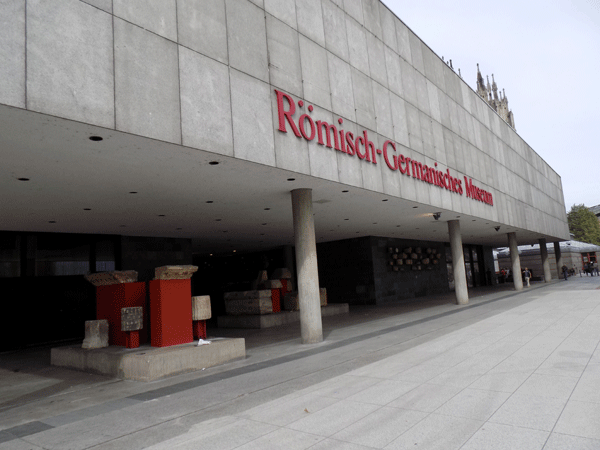
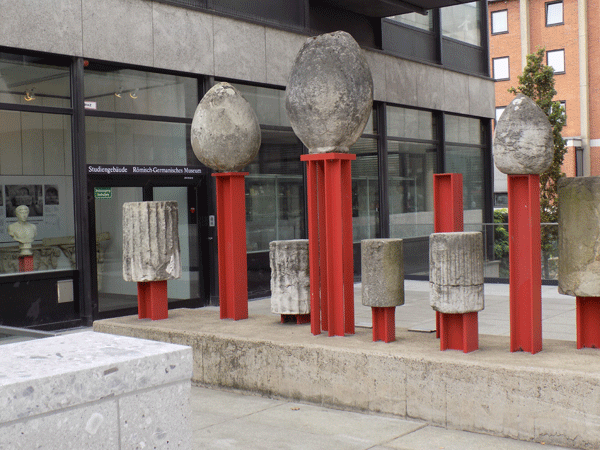
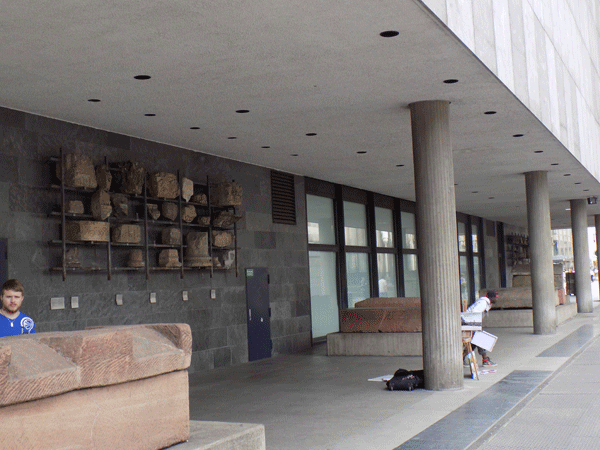
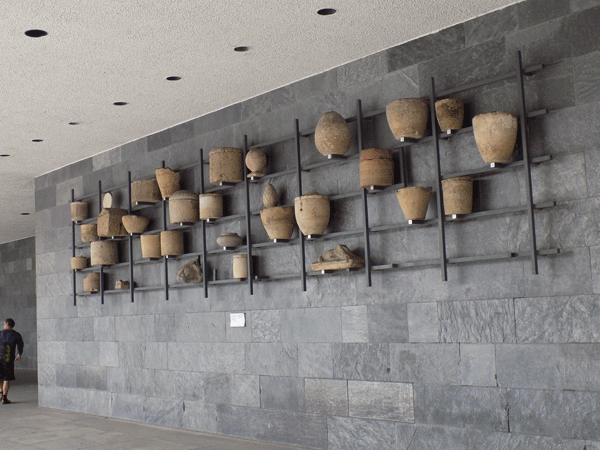
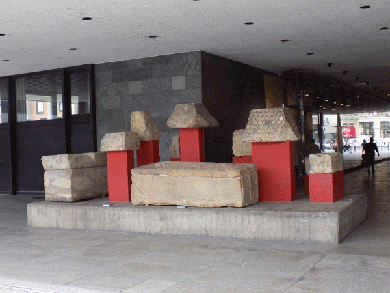
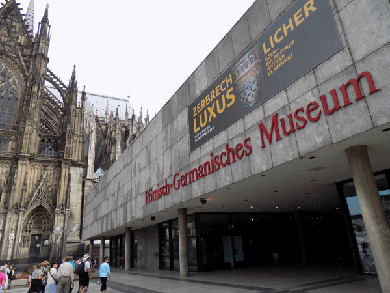
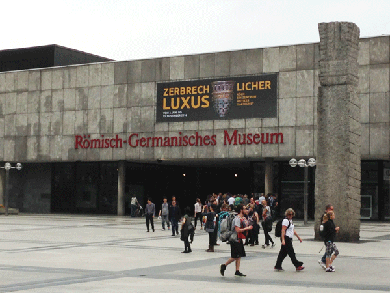
In the entrance area in front of the cloakroom there are already some glass display cases with vessels from Roman times, which already make you want more. If you then go further and stand on the first steps in the stairwell, you will discover something much larger: a huge tomb! This was secretly uncovered in the 1960s and then ultimately relocated. This is the approximately 15 meter long gravestone building of the well-known legionnaire Poblicius. It dates back to 40 AD. It must have been a huge adventure for the secret historians and, to be honest, it is a mystery to me how they managed to do all this secretly, given the size of the gravesite.
All that is known about Poblicius is that he achieved great wealth and great honor, otherwise he would probably not have been able to finance such a huge tombstone. Incidentally, the gravestone was found in the Severinsviertel, which was a typical final resting place. The gravestones were mostly buried outside the city walls. Finding such a large tombstone today is roughly equivalent to winning the lottery. This is how the stones were - according to additional information from the museum director, Dr. Trier - also very often reused to create other things.
The Medusa face
Further along the museum tour you can discover a Medusa face, which was part of the Roma and Venus Temple in the Roman Forum. So Medusa's mask got around a lot. There is a legend about Medusa that says that her gaze turned other people to stone! Oh, move on quickly! Not that anything else is happening here...
The museum has a very large exhibition area totaling 4500 square meters and was reportedly built in 1974 on the remains of a Roman house or even a city villa. There's a lot to look at here... including:
- the reconstructed arch of the north gate of the city
- various relics
- stone portrait heads of personalities
- Models of other places and gates in the city wall
So you can say that you can find a large number of finds here from various points in the history of the Rhineland and the city of Cologne. It goes from prehistory to well into the early Middle Ages. These are briefly summarized for you:
- a traveling wagon
- lots of jewelry
- golden crowns!
- Stone tools
- lots of weapons
- of course also ceramic and clay vessels
- Teracotta sculptures from the 2nd century AD
- beautiful sculptures
A golden ivy wreath is clearly reminiscent of the pictures of Gaius Julius Caesar, as he sits there with his head held high. And while we're already talking about the headdresses, let's also look a little more closely at the beautiful jewelry that women wore back then. You can admire jewelry from Greek and Roman ladies here! Here too we would like to briefly list things for you:
- Amulets
- Crescent moons
- beautiful earrings with decorations
- Sheets of gold set with many precious stones
- golden rings
- Signet rings
- Belt buckles
The first Rhine bridge
Here too, the Romans did pioneering work again and built the first bridge over the Rhine. In addition to the road system and a water pipe, you can almost say that you created the entire infrastructure of the city, from which the people of Cologne still benefit today. The first bridge was made of wood and the few remains of it are actually exhibited in this museum. There is also a model with which we can imagine the complete, intact bridge in detail. It's simply unbelievable what the Romans were capable of even back then.
The Dionysus mosaic
And now we come to what is certainly the most famous exhibit in the museum: the Dionysian mosaic. It was probably found in 1941 very close to Cologne Cologne Cathedral. It was created as part of a dining room in a peristyle house and still exudes incredible charisma today. Since the Romans were southerners, it was naturally laid out in the Mediterranean style. The house was a rectangular courtyard with a well right in the middle. There were a number of mosaics and wall paintings in the house, indicating a wealthy family.
The mosaic consists of a total of 27 medallions, which shine in different colors. The main theme of the mosaic is clearly the god of wine and the gods of ecstasy, fertility, grapes and joy. So it reflects everything that Cologne stands for in the fifth season and not only then! So it suits Cologne and the people of Cologne wonderfully. Legendary, because the entire mosaic consists of around 1.5 million mosaic tiles, which were made from glass, clay or natural stone.
G8 summit culminates on the mosaic
The mosaic achieved great fame and media attention when various international politicians from around the world met in Cologne. They met for the G8 summit and this had a special highlight: there was eating and drinking on the mosaic! Of course, this was previously covered with a glass safety plate before the guests toasted to it.
Various tombstones and tombs
A large area in the museum is also the exhibition of various grave sites and grave goods. In the past, the dead were given a few gifts to take into the grave and a coin was placed in their mouths as payment for the ferryman who was responsible for the crossing to the realm of the dead. I would say eerily beautiful and would just briefly point out the exhibits:
- Grave goods from the Merovingian, Celtic and Germanic periods
- Tombs
- Tombstones
Fragile luxury
And that is the name of the largest exhibition of Roman glasses and vases from the period: 1st - 4th centuries. Century. There are a whole lot of glasses, ointment bottles, wine jugs, jugs, vases etc. which are not only from the Cologne area, but also consist of imports from Italy or Syria.
Outside the museum
As already mentioned above, there are also some exhibits that are located outside the museum. Many Roman relics are displayed there on the wall of the museum. In addition to the museum and the cathedral, there is an old Roman road that you can even walk on and a piece of a water canal. By the way, you can get there very quickly from our Holiday apartment Cologne!
Guided tours in the museum
Of course, there are also guided tours in such a large and important museum.
Address and other data
Roncalliplatz 4
50667 Köln
Phone: 0221/22124438
Website
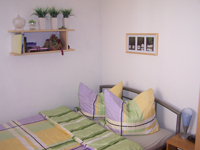
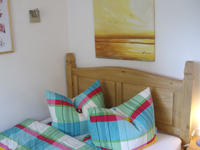
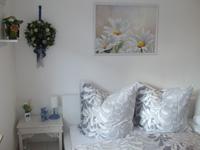
Also interesting: Walk through the Vringsveedel.



